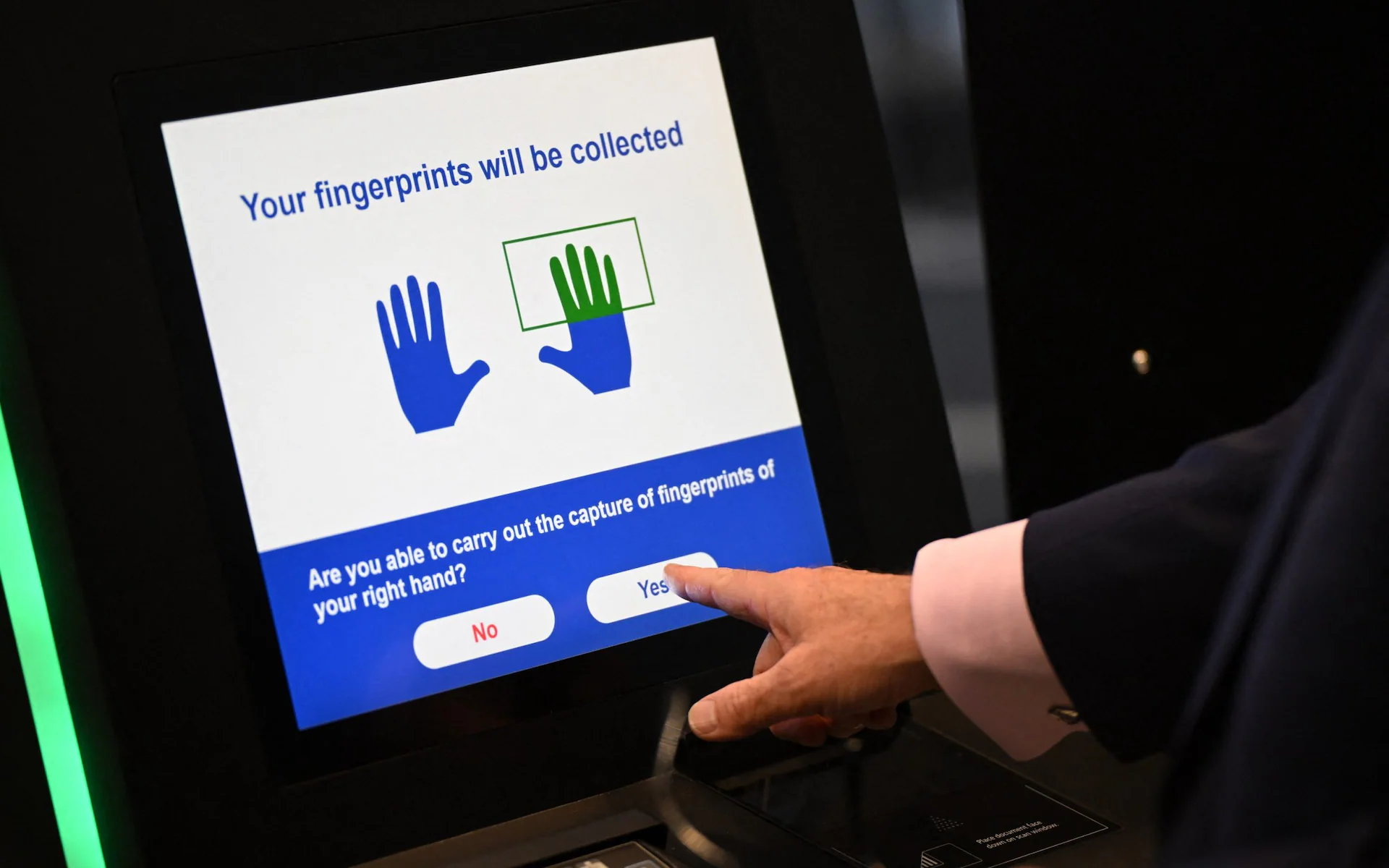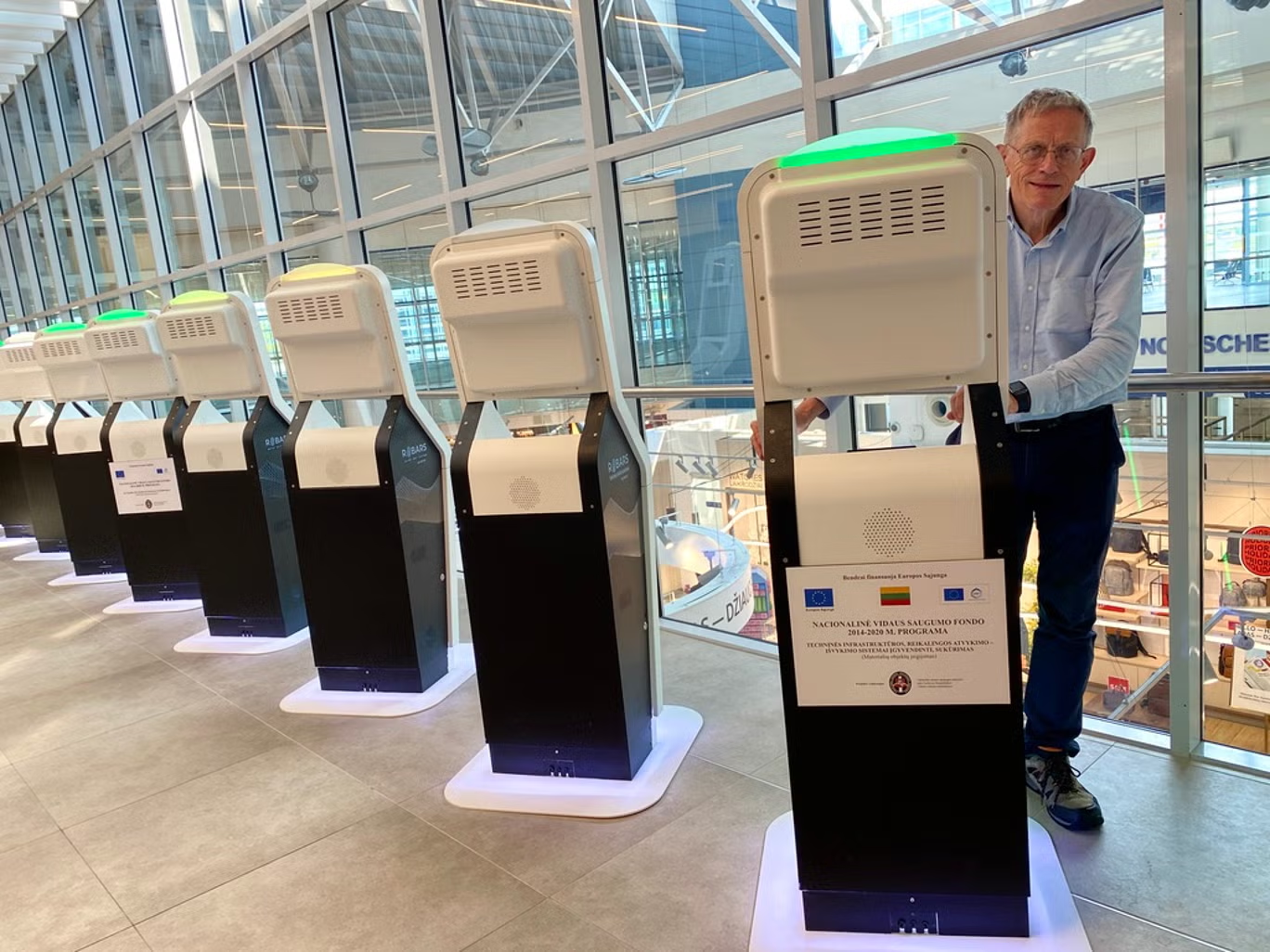The EU’s Entry/Exit System (EES) officially launched on 12 October 2025. It replaces manual passport stamping with digital records and uses biometric data — fingerprints and facial recognition — linked to your passport. Its purpose is to track the entries and exits of non-EU travellers (which includes British passport holders) across the Schengen Area and enforce the 90/180-day visitation allowance.
While media reports have suggested queues of “up to four hours” at some EU airports, the reality is more nuanced. Implementation is being phased over six months, so most airports do not yet have a fully live system. Only a few, such as Estonia, have all border points operational from day one.

Here’s what UK travellers need to know and how to plan efficiently?
Departures from UK Airports
All UK airport departures are business as usual. Travellers are not being enrolled into EES before leaving the UK, so security, airline check-in, and boarding processes remain unchanged.
The first interaction with the EU’s new Entry Exit System (EES) will normally occur on arrival at the first EU airport on your trip.
Arrival in Europe: Where Delays May Happen
During the phased rollout, only a small proportion of border points in each EU country have the system live. For example, Germany initially has only one airport operating EES, Düsseldorf, while Estonia has all border posts live from day one.
Some airports have experienced longer processing times including Prague Airport (Czech Republic and Estonia.
For context, under the previous manual passport stamping system, average processing times were around 30–90 seconds per traveller, with peak times sometimes reaching two minutes. This means the first-time EES registration roughly doubles the time needed per traveller, which can lead to longer queues during busy periods or at airports with fewer kiosks.
The “up to four hours” figure represents worst-case scenarios, not the standard experience for all travellers. Delays are primarily for first-time arrivals; once a traveller completes registration, subsequent entries are much faster, typically 1–2 minutes for verification.
Travellers should allow extra time on arrival in Europe, particularly if it is their first trip under EES, during busy periods, or at airports that are early adopters of the system.
You need to carefully consider your onward travel arrangements – for example if you have a transfer waiting for you at the airport or you are joining a connecting flight, as you will need to complete the EES on your arrival in the EU.
Connecting Flights
If you have a connecting flight within the Schengen Area, you will complete full EES registration only at your first entry point into the Schengen zone. Subsequent flights within Schengen generally do not require additional registration if you remain airside.
If your connection requires exiting and re-entering Schengen, for example leaving the transit area for a long layover, you will need to complete EES registration at the new entry point.
Returning to the UK
The UK is not part of EES. Returning home is unaffected, and no additional checks are required. Any queues or delays are limited to your first entry into an EU airport under the new system, however, not where there’s a juxtaposed border….

What Are Juxtaposed Borders and Why They Matter
Some UK travel points, such as Eurostar (London St Pancras), Eurotunnel (Folkestone), and the Port of Dover, operate under juxtaposed border arrangements. This means that EU border checks are carried out on UK soil before boarding, rather than on arrival in Europe.
- For these services, travellers complete EES registration in the UK, either via kiosks or assisted by agents, before departure.
- This is different from flights or ferries from other UK airports, where EES registration is done on arrival in the EU.
- The juxtaposed arrangement ensures that passengers enter the EU already cleared and registered, reducing processing time on arrival abroad.
Why this matters:
- Travellers using Eurostar, Eurotunnel, or Dover ferries should allow extra time at the UK departure point, not on arrival in the EU.
Cruises
- Cruises: If your cruise departs and returns to the UK, you will not need EES registration. Travellers flying to join a cruise in Europe will register at the airport on arrival. Exit checks are taken at the last EU port if returning by air.
What Travellers Should Do Now
- Carry travel documents: Proof of accommodation, return travel, and insurance may be requested.
- Few airports currently have live EES systems, and implementation will continue over six months (check before you depart!).
- First-time registration roughly doubles the previous processing time per traveller, which can increase queues temporarily.
- Allow extra time on arrival, not departure (unless travelling by train or ferry!), and have documents ready.
- Allow extra time for connecting flights within EU/as you may experience delays at your first point of entry.
- Once registered, future EU trips will be faster, with only quick biometric checks needed.
If you’ve booked a trip with us or are planning one that may be affected by EES or the upcoming ETIAS system, we will discuss all the details with you personally. You don’t need to worry — we’ll make sure you know exactly what to expect and how to plan your journey smoothly.
If you are still unsure, we offer free travel advice and are always happy to help! Feel free to give us a call on 01902 288104, send us a message, or book an advice meeting.